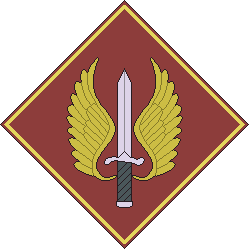Karak may refer to:
Contents
- karak, a Medieval Arabic term for a fortress, borrowed in Old French as crac (Modern French: krak):
- Krak des Chevaliers
- Kerak Castle, also spelled Karak
- Krak de Montreal
Karak may refer to:
Hassan, Hasan, Hassane, Haasana, Hassaan, Asan, Hassun, Hasun, Hassen, Hasson or Hasani may refer to:

The history of Jordan refers to the history of the Hashemite Kingdom of Jordan and the background period of the Emirate of Transjordan under British protectorate as well as the general history of the region of Transjordan.
Cham or CHAM may refer to:

Al-Karak, in English sources often simply Karak, is a city in Jordan known for its medieval castle, the Kerak Castle. The castle is one of the three largest castles in the region, the other two being in Syria. Al-Karak is the capital city of the Karak Governorate.

Krak des Chevaliers is a medieval castle in Syria and one of the most important preserved medieval castles in the world. The site was first inhabited in the 11th century by Kurdish troops garrisoned there by the Mirdasids. In 1142 it was given by Raymond II, Count of Tripoli, to the order of the Knights Hospitaller. It remained occupied by them until it was reconquered by the Muslims in 1271.

Montreal, or Qal'at ash-Shawbak in Arabic, is a castle built by the Crusaders and expanded by the Mamluks, on the eastern side of the Arabah Valley, perched on the side of a rocky, conical mountain, looking out over fruit orchards below. The ruins are located next to the modern town of Shoubak in Jordan.

Margat, also known as Marqab, is a castle near Baniyas, Syria, which was a Crusader fortress and one of the major strongholds of the Knights Hospitaller. It is located around 2 kilometres (1.2 mi) from the Mediterranean coast and approximately 6 kilometres (3.7 mi) south of Baniyas. The castle remained in a poor state of preservation until 2007 when some reconstruction and renovation began.
Gaya may refer to:

Ma'an is a city in southern Jordan, 218 kilometres (135 mi) southwest of the capital Amman. It serves as the capital of the Ma'an Governorate. Its population was approximately 41,055 in 2015. Civilizations with the name of Ma'an have existed at least since the Nabatean period—the modern city is just northwest of the ancient town. The city is an important transport hub situated on the ancient King's Highway and also on the modern Desert Highway.

The siege of Kerak was conducted by the forces of Muslim Sultan Saladin against the Crusaders and the Christian King Baldwin IV of Jerusalem at the Kerak Castle from early November to 4 December 1183. The Crusaders successfully withstood the siege.

Karak is one of the governorates of Jordan, located south-west of Amman, Jordan's capital. Its capital is Al-Karak. It s bordered by Madaba and the Capital governorates to the north, Ma'an Governorate to the east, Tafilah Governorate to the south, and the Dead Sea to the west.

Kerak Castle is a large medieval castle located in al-Karak, Jordan. It is one of the largest castles in the Levant. Construction began in the 1140s, under Pagan and Fulk, King of Jerusalem. The Crusaders called it Crac des Moabites or "Karak in Moab", as it is referred to in history books. It was also colloquially referred to as Krak of the Desert.
Krak may refer to:
Karak is a village in the municipality of Zahlé in the Zahle District of the Beqaa Governorate in eastern Lebanon. It is located on the Baalbek road close to Zahle. Karak contains a sarcophagus claimed by the locals to be the tomb of Noah. The inhabitants of Karak are Melkites, Maronites and Shia Muslims.
Taybeh also spelled Taibe, TaibehTaiybeh, Tayiba etc., may also refer to:

71st Special Battalion or 71st Counter Terrorism Battalion or as known today Special Unit II is a Jordanian Special Forces battalion that specializes in combating terrorism.

Ash-Sharāt or Ash-Sharāh (Arabic: ٱلشَّرَاة, also known as Bilād ash-Sharāt or Jibāl ash-Sharāt, is a highland region in modern-day southern Jordan and northwestern Saudi Arabia. It was formerly a sub-district in Bilad al-Sham during the 7th–11th centuries CE.

On 18 December 2016, a series of shootings took place in the city of Al-Karak in southern Jordan. The attack started in the vicinity of Al-Karak where a group of unidentified militants ambushed emergency responders and then moved into the city, attacking police patrols and the local police station and finally seeking shelter in the historic Crusader-era Kerak Castle, a popular tourist attraction.
Mansoura is the capital city of Dakahlia Governorate in Egypt.